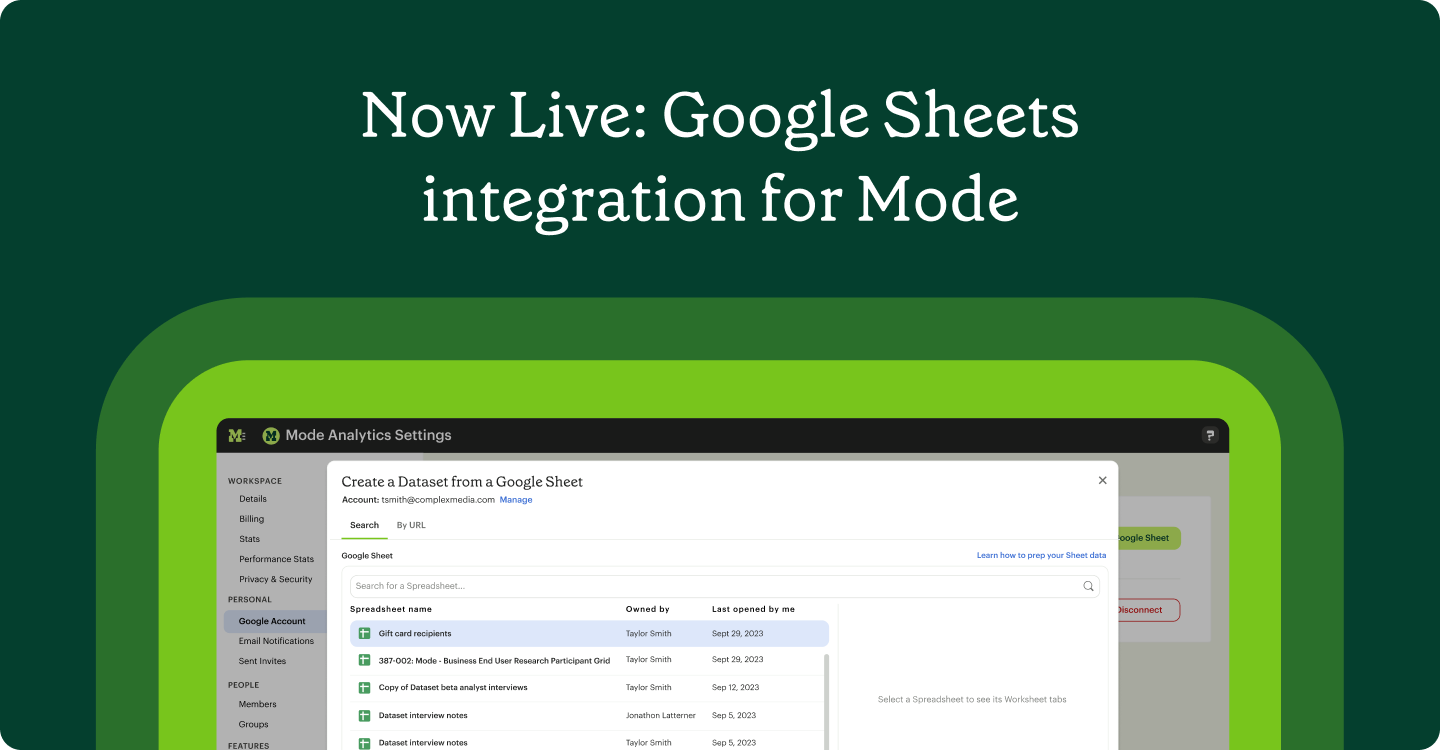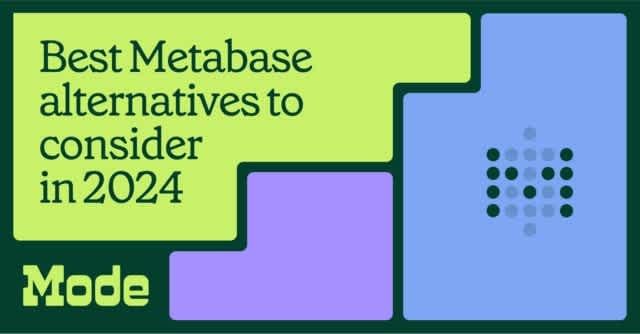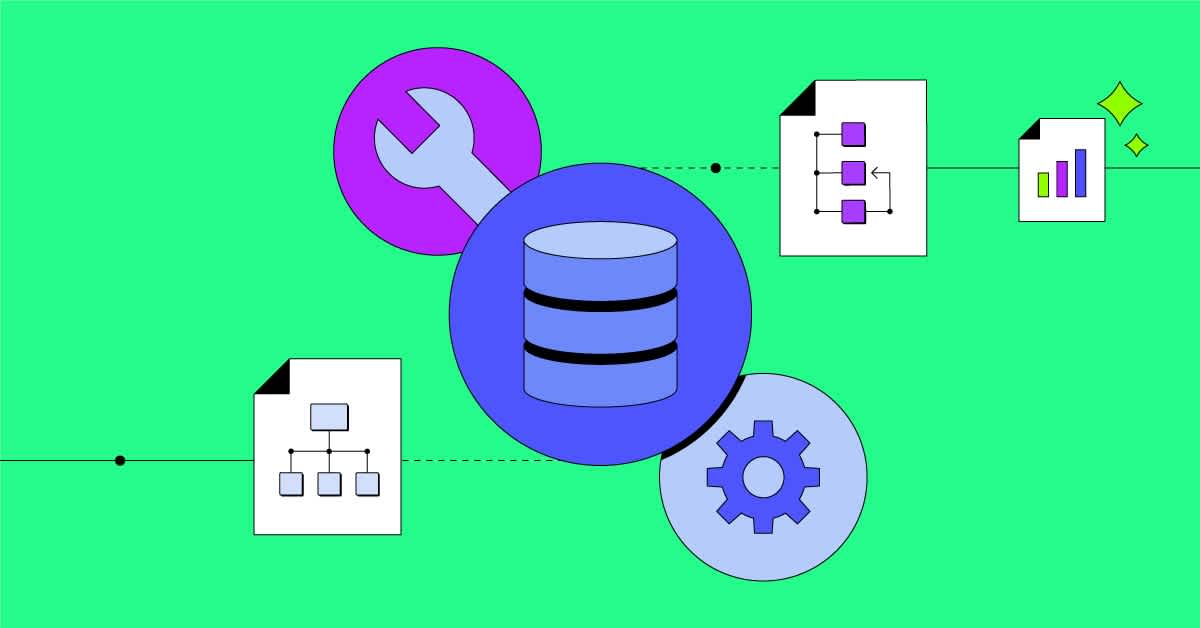ThoughtSpot acquires Mode to define the next generation of collaborative BI >>Learn More
Analysis
Now Live: Google Sheets integration for Mode
Mode’s vision has been about connecting data and business teams around data analysis. However, having a single source of truth is challenging when business teams are using Google Sheets to collect, manage, prep, and share their data.







